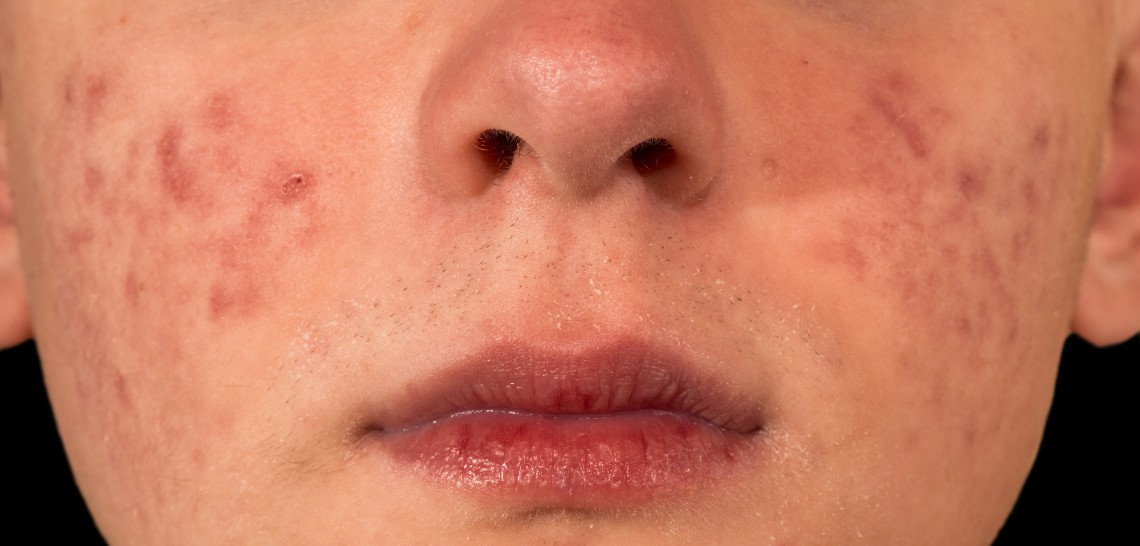
What’s That? Common Skin Conditions That Leave Marks
The flawless complexion that you see on magazines, in movies, and on the internet isn’t often attainable in real life. Spots, splotches, and discolored areas of skin can be normal for many people. But that doesn’t mean you should leave every skin issue alone. What types of blemishes, spots, and other noticeable marks can develop on your face or body? If you’re not sure what’s on your skin, look at the most common types of marks left by skin conditions and determine which ones require a dermatologist’s assessment.
Skin Cysts
You may feel a cyst before you see it. This issue often starts out as a lump or a bump under the skin. Cysts are small liquid-filled nodules that result from a number of different causes, such as an injury or hair follicle irritation. In some cases, oil and dead skin cells can clog the follicles, causing cystic acne. Cysts can form anywhere on the body and may be painful or cause discomfort. If the cyst ruptures, it often produces a yellowish fluid. Additionally, an open cyst leaves your skin at risk for infection. If you have cysts that are large, painful, tender, red, swollen, or cause cosmetic issues, you may need treatment from a dermatologist. The specific treatment that the doctor chooses depends on several factors, such as the size of the cysts, the location of the cysts, your general health, and the condition of the cysts. Common treatments for this issue include an injection with a prescription medication to reduce swelling, incision, and removal.
Flat Macules
A macule is a skin discoloration in one specific area of the skin. This type of lesion is flat and smaller than one centimeter in diameter. If the discoloration is greater than one centimeter, the doctor may refer to it as a patch. While many patients experience dark-colored macules, this condition can also cause hypopigmentation (areas that are lighter than your normal skin tone). Most macules are harmless and don’t require treatment. Even though they won’t go away, the small size typically minimizes the cosmetic issues. Some macules change color, grow larger, have irregular borders, cause discomfort, or become itchy. These symptoms may indicate a more serious problem. Always report changes in macules to your doctor. The dermatologist can evaluate the lesion and decide what tests are necessary to rule out issues such as skin cancer.
Mole Growths
Most people have at least a few moles somewhere on their body. This area of discoloration may be flat or raised, large or small. Like flat macules, a mole type of lesion doesn’t necessarily indicate a problem. But if the mole is uneven in color or shape; has irregular borders; changes color, shape, or size; bleeds; hurts; or appears crusty; a dermatologist needs to evaluate it immediately. The dermatologist will visually assess the mole and possibly biopsy it. The doctor will either shave part of the mole off or completely remove it. A pathologist will then look for abnormal or cancerous cells. Depending on the outcome of the biopsy, the dermatologist will create a treatment plan. Moles that are atypical, but benign, typically don’t require further treatment. But the doctor may want to keep a watchful eye on the area and the rest of your skin. This means regular annual visits for a full body check.
Acne Scars
Skin damage can cause red, thick, or textured marks. Mild acne or a pimple typically won’t cause scarring. But severe or chronic acne can result in this secondary skin issue, even after the acne has resolved. While acne scars typically won’t cause health problems, they can come with cosmetic issues that cause psychological stress. The dermatologist can help to reduce acne scars with treatments such as dermabrasion, chemical peels, laser resurfacing, light therapy, and fillers. Do you have a mark on your skin that requires further evaluation? Contact Asheboro Dermatology & Skin Surgery Center for more information.
